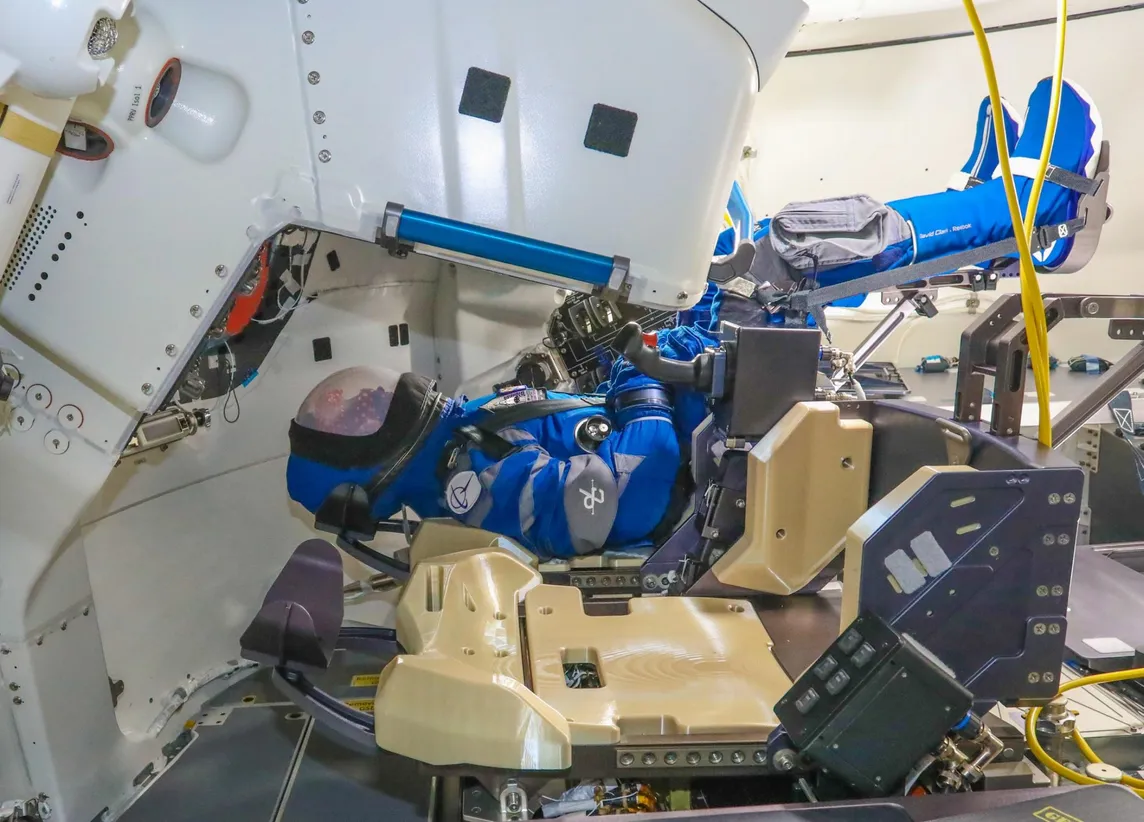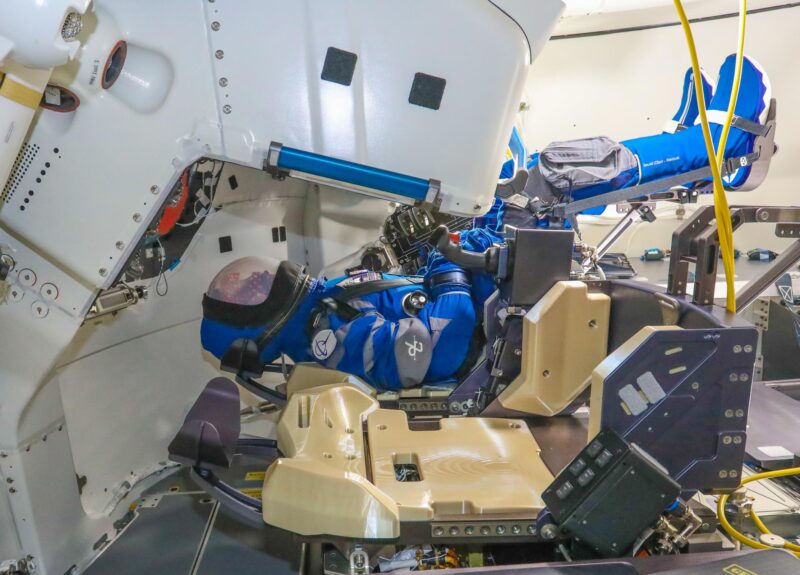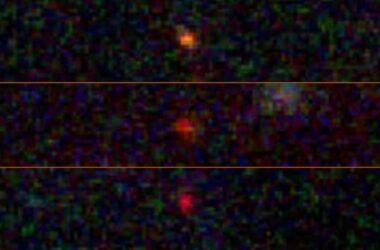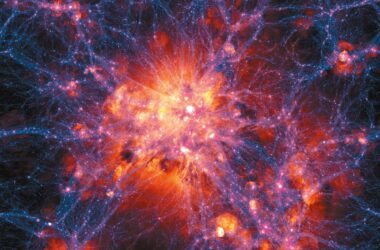
Les astronautes de la NASA Bob Hines et Kjell Lindgren saluent “Rosie the Rocketeer” à l’intérieur du vaisseau spatial Boeing Starliner, peu après avoir ouvert son écoutille. Crédit : NASA
Les astronautes vivant à bord de la Station spatiale internationale (ISS) ont ouvert pour la première fois l’écoutille du vaisseau spatial CST-100 Starliner de Boeing à 12 h 04 EDT samedi 21 mai, lors de son test de vol orbital 2 (OFT-2) sans équipage.
Le Starliner a été lancé à bord d’une fusée Atlas V de United Launch Alliance lors d’un essai en vol vers la Station spatiale internationale à 18 h 54 le jeudi 19 mai, depuis le complexe de lancement spatial 41 de la station spatiale de Cap Canaveral en Floride. Le vaisseau spatial sans équipage s’est amarré avec succès au module Harmony de la station spatiale à 20 h 28 HAE le vendredi 20 mai.

Rosie the Rocketeer, le dispositif de test anthropométrique de Boeing, a repris sa place dans le siège du commandant à l’intérieur du vaisseau spatial CST-100 Starliner de la société pour son deuxième essai en vol orbital sans équipage dans le cadre du programme Commercial Crew de la NASA. Le premier vol de Rosie, OFT, a fourni des centaines de points de données sur ce que les astronautes vivront pendant le vol. Pour l’OFT-2, elle aidera à maintenir le centre de gravité du Starliner pendant l’ascension, l’amarrage, le désamarrage et l’atterrissage. Crédit : Boeing/John Proferes
Pour l’essai en vol, Starliner transportait environ 500 livres de ;” data-gt-translate-attributes=”[{” attribute=””>NASA cargo and crew supplies and more than 300 pounds of Boeing cargo to the International Space Station. Following certification, NASA missions aboard Starliner will carry up to four crew members to the orbiting outpost, enabling the continued expansion of the crew and increasing the amount of science and research that can be performed aboard the space laboratory.
The uncrewed flight test was designed to test the end-to-end capabilities of the crew-capable system as part of NASA’s Commercial Crew Program. OFT-2 will provide valuable data for NASA certifying Boeing’s crew transportation system for regular flights with astronauts to and from the space station.
Starliner is scheduled to depart the space station on Wednesday, May 25, when it will undock and return to Earth, with a desert landing in the western U.S. The spacecraft will return with more than 600 pounds of cargo, including Nitrogen Oxygen Recharge System reusable tanks that provide breathable air to station crew members. The tanks will be refurbished on Earth and sent back to the station on a future flight.



